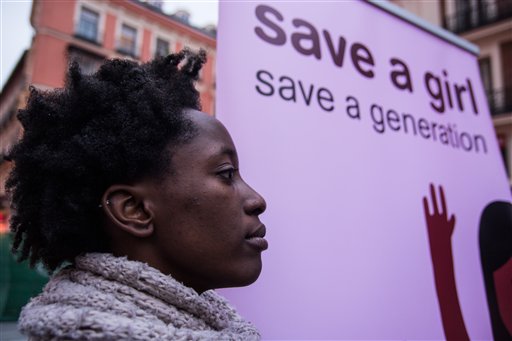The federal government has spent more money trying to invent the "origami condom" than it has to combat female genital mutilation.
The Government Accountability Office released a report Thursday finding that America’s efforts to combat the harmful practice of gender-based violence around the world is "limited."
More than 200 million women and girls alive today have suffered from female genital mutilation/cutting (FGM/C), or "procedures that involve partial or total removal of the external female genitalia for non-medical reasons."
Though the State Department has recognized female genital mutilation as "gender-based violence," the agency has done little to invest in fighting the practice abroad.
"U.S. assistance efforts to address FGM/C are limited," according to the GAO report. "The Department of State (State) and the U.S. Agency for International Development (USAID) each had one active standalone project in 2014, and the agencies also undertook some FGM/C-related efforts as components of projects with broader assistance goals."
The State Department’s only stand-alone effort specifically targeting female genital mutilation is in Guinea, and has only received $1.5 million over 2 years. The amount is less than what Daniel Resnic received from taxpayers for his so-called origami condoms.
In contrast, the U.S. Agency for International Development spent $85.6 million on contraception for developing countries in 2014 alone.
Aside from only having one project directly addressing female genital mutilation, the government has also not provided funding to a United Nations program dedicated to combating the practice.
"The U.S. government provides funding to the United Nations Population Fund (UNFPA) and UNICEF but, to date, has not contributed funds to the UN agencies' Joint Program on FGM/C. If congressional restrictions for UNFPA funding (such as the requirement for UNFPA to maintain U.S. funds in a separate account) are met, there are currently no specific legal restrictions that would prohibit U.S. funding provided to UNFPA from being available for the Joint Program on FGM/C," the GAO said.
Officials at the State Department said "competing development priorities, such as HIV/AIDS, leave little funding specifically for FGM/C."
The stated purpose for Resnic’s project was HIV prevention. He was given $2.4 million from the NIH to create a male and female version of his silicone-based condoms modeled off the Japanese folding paper, and the "first-of-its-kind anal condom."
However, the condoms never hit the market, as Resnic was accused of wasting funding from the National Institutes of Health on full body plastic surgery, lavish parties at the Playboy mansion, a Cadillac, and vacation homes. Resnic later said he is "on the hook" with the NIH, and has to pay back at least a portion of the funding.
The origami condom website is no longer active.
